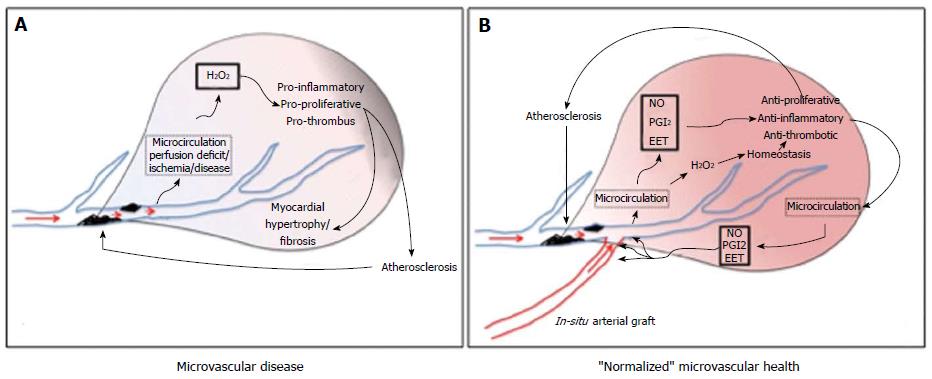Copyright
©The Author(s) 2016.
World J Cardiol. Nov 26, 2016; 8(11): 623-637
Published online Nov 26, 2016. doi: 10.4330/wjc.v8.i11.623
Published online Nov 26, 2016. doi: 10.4330/wjc.v8.i11.623
Figure 2 From Ferguson et al[37], with adaptation from Gutterman et al[62].
In a healthy heart, arteriolar endothelium produces NO, prostacyclin (PGI2, and EETs) as well as low levels of hydrogen peroxide, which support a quiescent non proliferative state. With the onset of disease (A), flow through the microvasculature releases hydrogen peroxide, creating a proinflammatory environment throughout the organ, potentially leading to hypertrophy, fibrosis, and atherosclerosis. In B, with bypass grafting of ischemic myocardium, the microvascular health of the myocardium is “normalized”. NO: Nitric oxide; PGI2: Prostacyclin; EET: Epoxyeicosatrienoic acids.
- Citation: Ferguson Jr TB. Physiology of in-situ arterial revascularization in coronary artery bypass grafting: Preoperative, intraoperative and postoperative factors and influences. World J Cardiol 2016; 8(11): 623-637
- URL: https://www.wjgnet.com/1949-8462/full/v8/i11/623.htm
- DOI: https://dx.doi.org/10.4330/wjc.v8.i11.623









